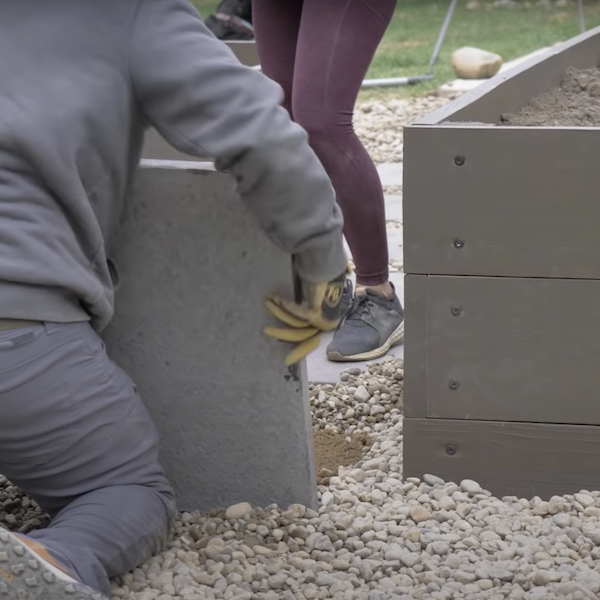Steps
STEP 1: Layout and Topsoil Removal
Use a tape measure and some spray paint to mark the boxes. Then, use a hose to layout an area that will be landscaped with rock to make mowing and edging easier.
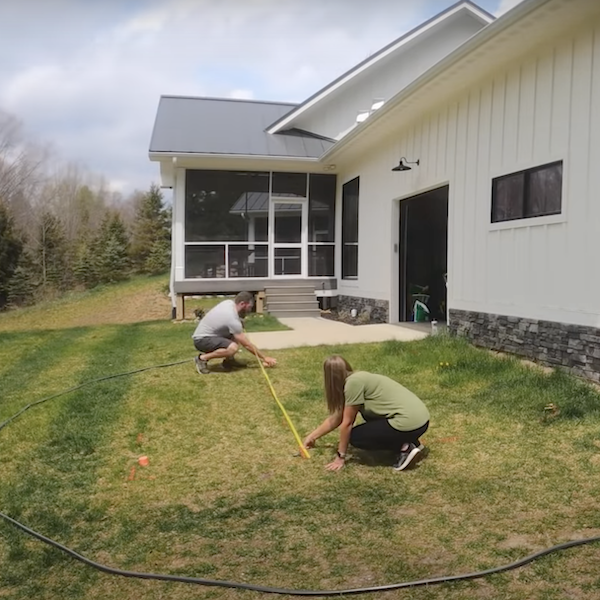
STEP 2: Layout and Topsoil Removal Continued
Remove the top soil and cut a nice clean vertical edge. Getting rid of the top soil will help make sure weeds don’t grow and will provide solid ground for the raised beds.
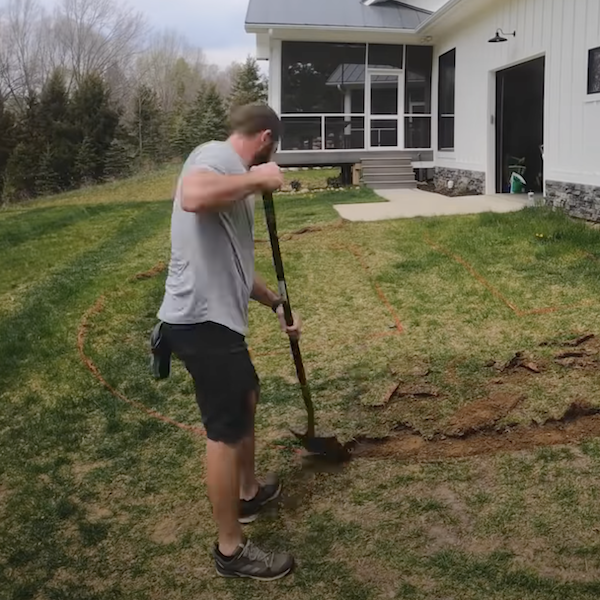
STEP 3: Roughing in the Irrigation
To get water to the planters, I trenched a line from the nearest spigot and laid 1/2" sprinkler line to each raised bed location.
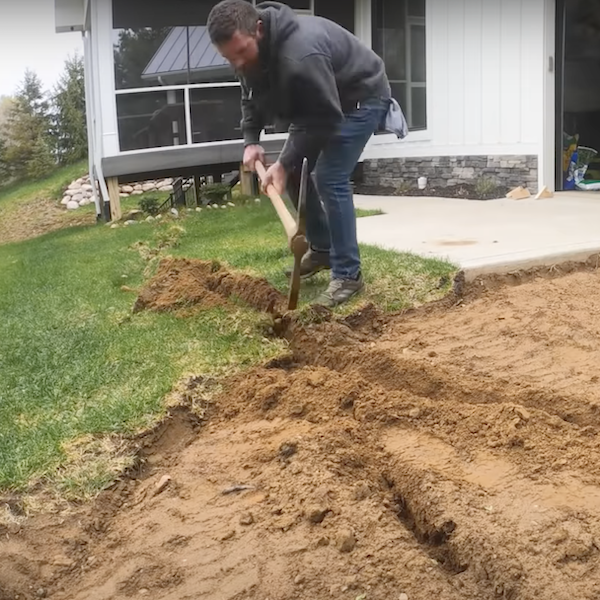
STEP 4: Roughing Irrigation Continued
I used a tee to go from one bed to the other and made sure to leave enough line exposed so that when the bed was filled with topsoil it would still be exposed.
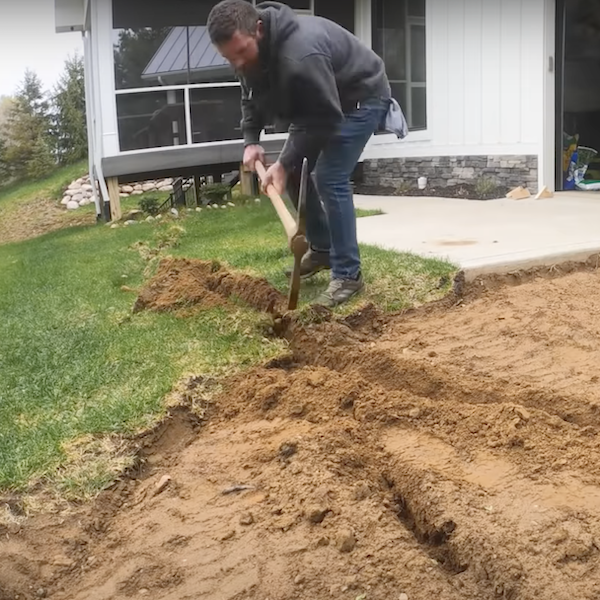
STEP 5: Weed Barrier and Stone
To make sure those pesky weeds don’t grow up we pinned down some weed barrier before the stone was laid.
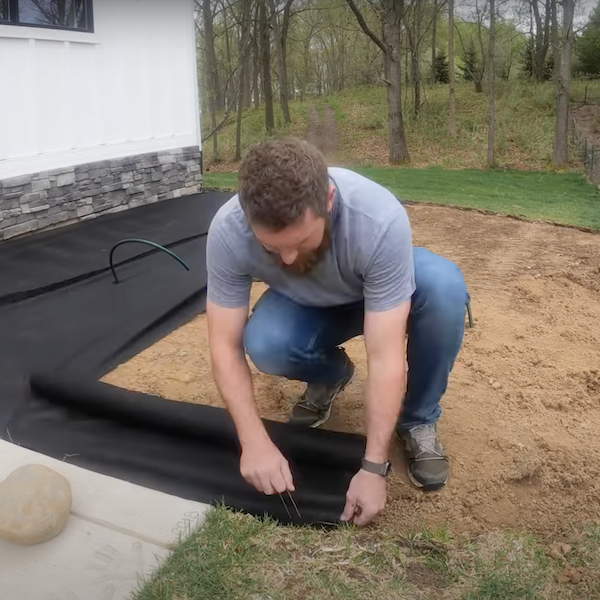
STEP 6: Applying a Finish (Optional)
Stain the lumber with a waterproofing stain, this is optional because it is treated. Doing so before assembly can save a lot of time and effort.
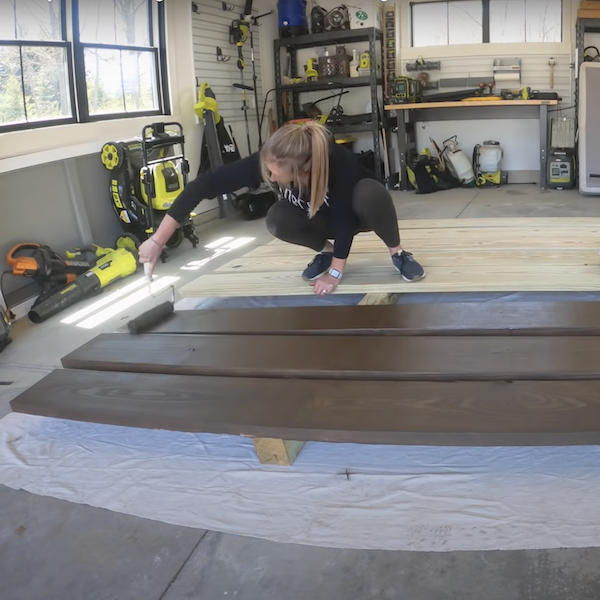
STEP 7: Assembling the Boxes
I set one end of the 2x10x12 board on the ground and clamped the other end to a 4×4 post. After getting this board perfectly level, I secured it to the 4×4 post with two lag bolts.
Tools
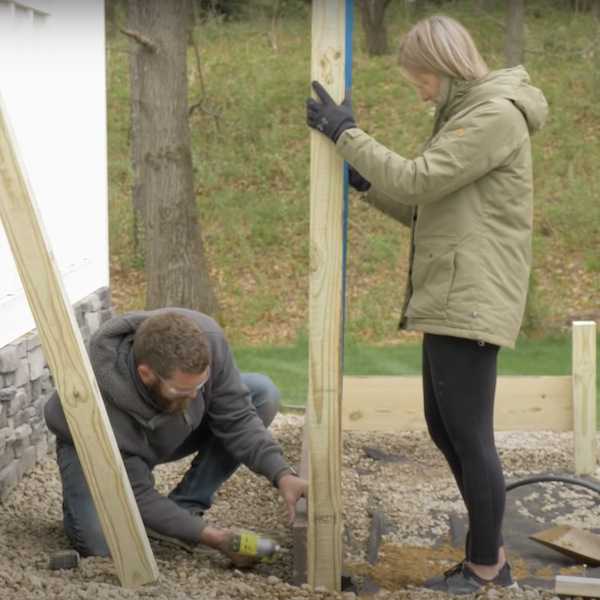
STEP 8: Assembling the Boxes Continued
Stagger the joints so each board has one end flush with the edge of the 4×4 and the other overlapping the 4×4 by 1-1/2″ so the next board could butt into that.
Tools
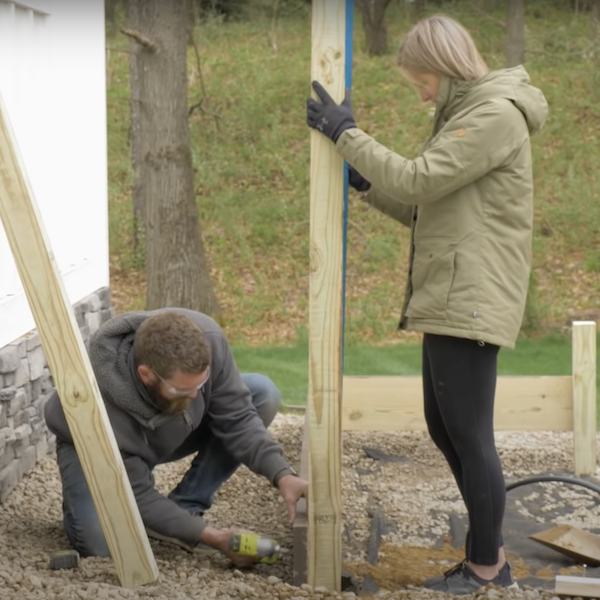
STEP 9: Assembling the Boxes Continued
After the first row was done I measured and cut the 4×4 off at what will be the top of the next row.
Tools
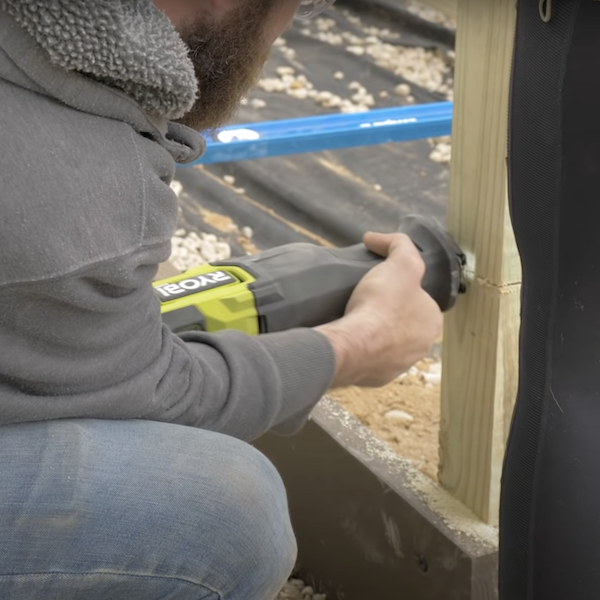
STEP 10: Assembling the Boxes
Fill the gaps on the bottom of each planter with boards. To do so I simply laid the board down the side and measured how much I would need to cut off at each end.
Tools
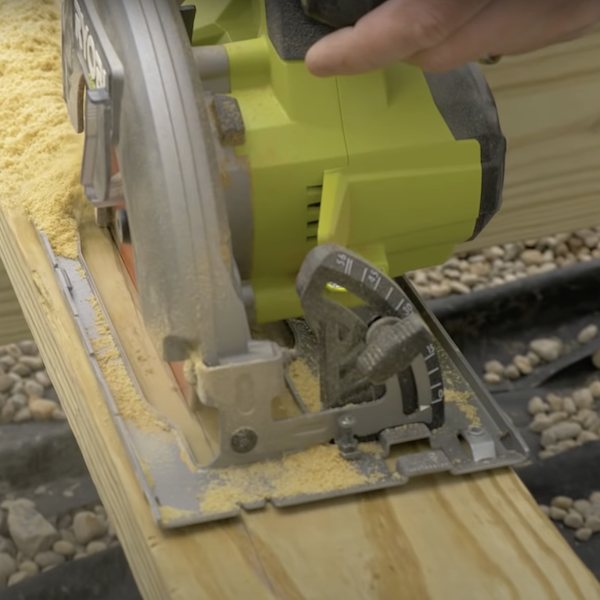
STEP 11: Assembling the Boxes Cotinued
Before filling the planters, I added 2×4 pieces inside the boxes to tie all the sides together and help keep them in line while minimizing bowing.
Tools
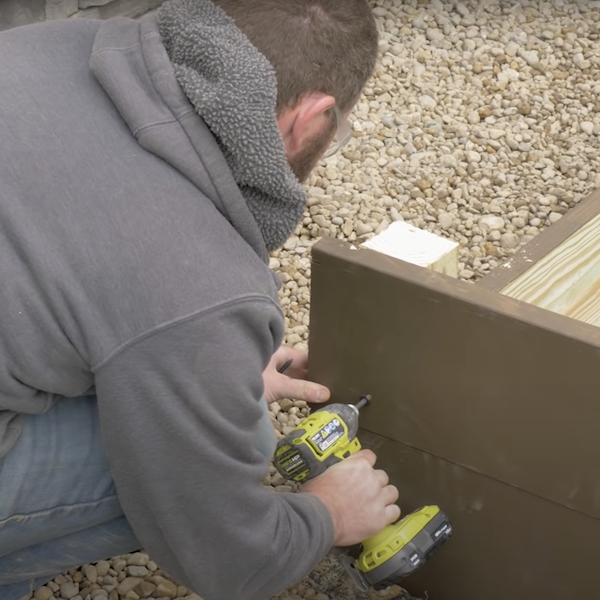
STEP 12: Attaching Liners
Before filling with topsoil, we stapled plastic to the sides which will help keep water and soil from seeping through the cracks as well as protect the lumber and plants from direct contact with each other.
Tools
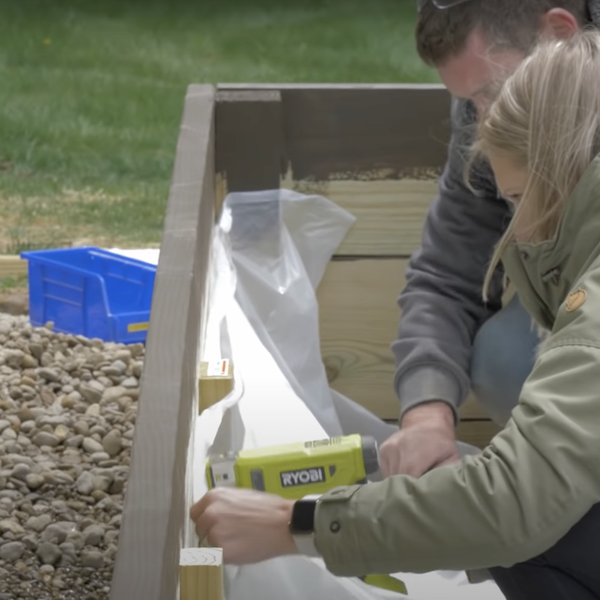
STEP 13: Filling with Topsoil
Add the topsoil into each of the planters, then level out the topsoil.
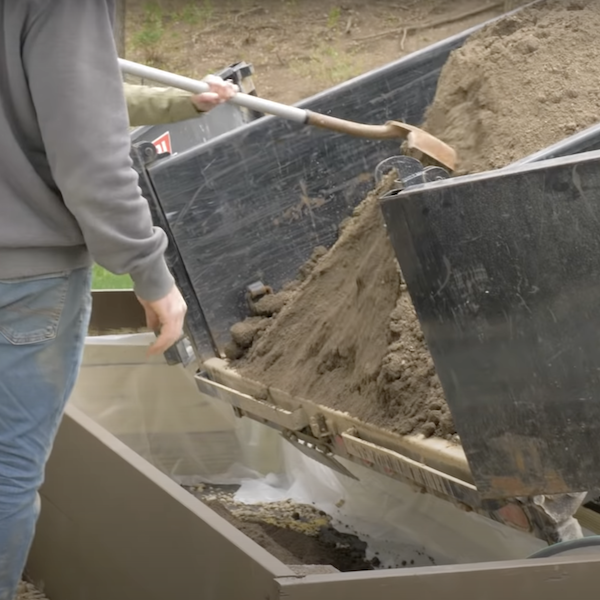
STEP 14: Finishing off Irrigation
Dig a trench for the main line down the center of each bed and locate about where you want the micro sprayers. Install as many as desired for the bed.
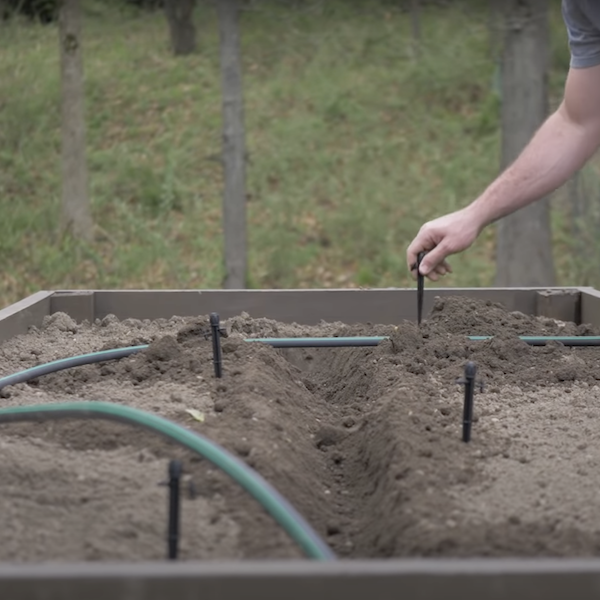
STEP 15: Finishing off the Irrigation Continued
We then drilled holes in the main line at each sprayer location and attached micro lines to connect each sprayer and plugged the ends of the main 1/2″ line.
Tools
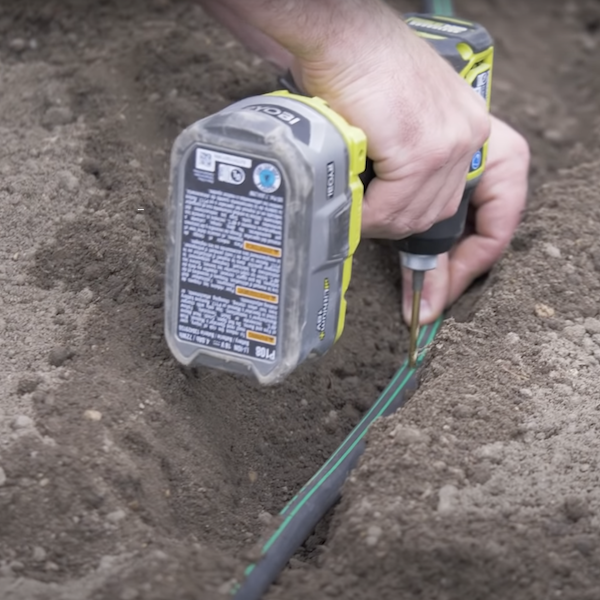
STEP 16: Finishing off the Irrigation Continued
Last but not least, terminate the other end of the 1/2″ line with a 3/4″ hose connector and tied that into the hose spigot with a timer on it for daily waterings.
Tools
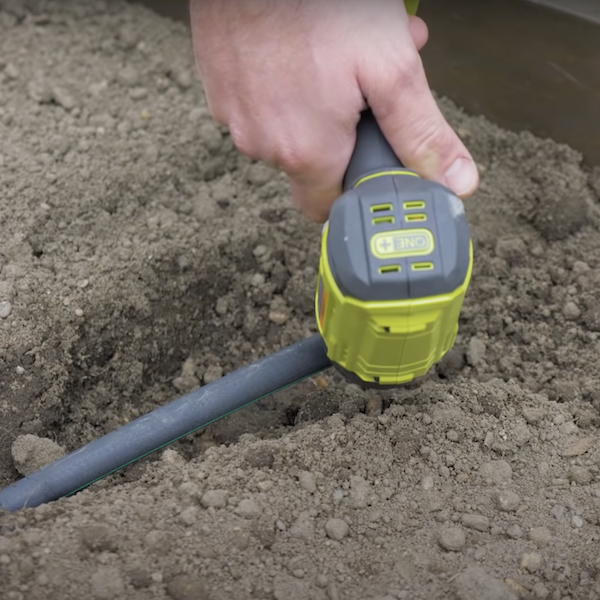
STEP 17: Laying Stones
Remove stone and use a little sand to level the area before placing the stepping stones and backfilling the stone around them.
